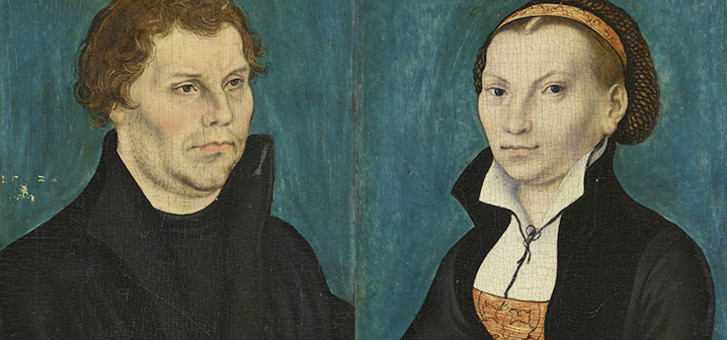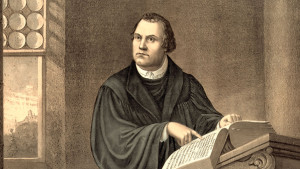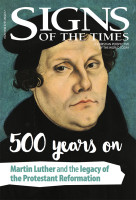Katharina von Bora was born in Lippendorf in 1499. Her parents were both from noble families. Sadly, Katharina’s mother died when she was five, and soon after she was sent to the Benedictine girls’ school at Brehna. Her father remarried in 1505, and it may be that Katharina’s stepmother did not want her at home, because in 1509 she entered the Marienthron convent in Nimbschen. Today we may think that 10 is very young to enter a convent, but it was common in the Middle Ages. It was more likely that upper-class girls would be placed in convents (they had a dowry, too, just as if they were getting married, as nuns were “brides of Christ”). Katharina, or Käthe, as Luther called her, got an excellent education and was later, during her marriage, able to take part in scholarly discussions with Luther and his friends in fluent Latin.
The story of Käthe’s escape from the convent at age 24 in a cart owned by Leonhard Koppe, a merchant, is dramatic but historically accurate. Several women were unhappy at Marienthron and requested their families to permit them to leave the convent and return home. Luther preached in a neighbouring town, Grimma, in 1519, and when no family help was forthcoming the women appealed to him. Four years later, 12 nuns left the convent and were taken—in herring barrels on the wagon—to Koppe’s hometown of Torgau, which was under the government of Luther’s patron and protector Duke Frederick of Saxony. Nine of the escapees arrived later that month in Wittenberg, Luther’s base.
In 1524 Käthe fell in love with Hieronymus Baumgärtner, but he became engaged to another woman in January 1525. She was also pursued by another suitor, Kaspar Glatz, but Käthe was desperate not to marry him.
It’s often perceived that Käthe’s eventual marriage to Luther was not “romantic” but the reality was more complex. She apparently told Luther’s friend Nicholas von Amsdorf—during her problems trying to get rid of Glatz as a suitor—that she would happily marry either him or Luther. In 1538, Luther wrote: “I never loved my wife . . . but God willed me to take pity on a poor abandoned girl, and He has made my marriage turn out most happily.”
Käthe and Luther married on June 13, 1525. Frederick of Saxony gave them the Black Convent (an Augustinian monastery) to live in. She had six children in eight years, two of whom died in infancy. Käthe ran a stud farm and a brewery and converted the convent into a guesthouse for Luther’s students and visitors. She later established a health clinic there (she had a reputation as a skilled healer/nurse). She also managed all the finances.
Käthe was clearly a strong-willed, decided, hard-working, enterprising woman. But everyone worked hard in the sixteenth century unless they were members of the affluent nobility. I think there was probably a strong sense that these early Protestants felt they were building a new world, which is an energising view to hold.
Some hardline Christians don’t like the idea that the great Luther was bossed around by his wife. Everyone knows he called her “my Lord Käthe” and some of his more famous quotes about her include: “Female government has never done any good;” and “If I can endure conflict with the devil, sin, and a bad conscience, then I can also put up with the irritations of Käthe von Bora.” However, in 1531, Luther said “I wouldn’t give up my Käthe for France or for Venice” and he called his favourite book of the Bible, Galatians, “my Käthe von Bora.” He had been nicknamed “the Morning Star of Wittenberg” for his starting of the Reformation, but he called Käthe “the Morning Star of Wittenberg” for her early rising and industry. They had a real partnership, a quite modern marriage.
A quote from Käthe survives from early in their marriage, when Luther was seriously ill in 1527: “My dear doctor, if it is God’s will, I would rather have you with God than with me. This concerns [not] only me and my child, but many pious Christian people who still need you; do not worry about me; I commend you to His divine will.” Luther travelled a lot as well as being ageing and ill; his last letter to her is dated February 14, 1546. He died four days later, after a little more than 20 years of marriage.






